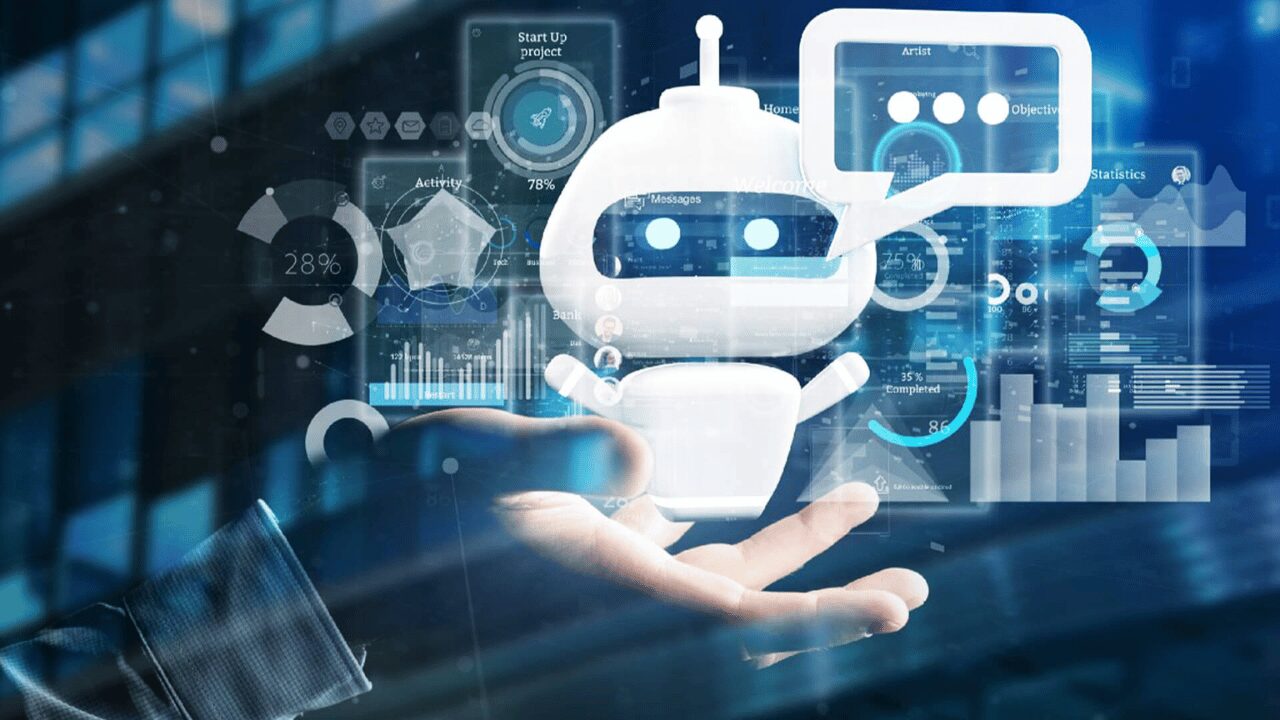
This post may contain affiliate links. Click here to find out more about this.
Table of Contents
Artificial Intelligence (AI) is no longer a futuristic concept; it’s a present-day reality rapidly transforming the digital landscape. The traditional website, once a static brochure, is evolving into a dynamic, intelligent entity. AI is fundamentally reshaping website design, user experience (UX), and core functionality, leading to hyper-personalized, ultra-efficient, and predictive digital environments. This evolution marks a significant shift, positioning AI not just as a tool for automation but as a co-creator of the next generation of web experiences.
The AI-Powered Website: How AI is Reshaping Design, UX, and Functionality
I. AI in Design and Development: The Automation Revolution
AI’s most immediate and measurable impact is on the development process itself, dramatically increasing efficiency and speed while reducing human error. By handling the rote aspects of creation, AI allows human developers and designers to focus on higher-level strategic decisions and creative problem-solving. This automation is fundamentally changing how digital products are brought to market.
A. Automated Prototyping and Generation
AI-powered design tools are democratizing web creation by transforming abstract ideas into tangible interfaces with minimal human input. These intelligent builders can generate initial concepts, detailed wireframes, and even functional code from a simple text prompt, a set of defined parameters, or existing content.
- Concept to Code: Advanced tools, utilizing deep learning, can interpret non-digital inputs—such as a hand-drawn sketch or a high-level business description—and convert them directly into interactive prototypes. This bypasses several traditional stages of the design process, significantly reducing the time spent on manual coding, component creation, and initial mockups. The result is a much faster iterative design cycle.
- Component Generation: AI interprets the constraints of modern design rules, automatically generating precise, production-ready code components (CSS, HTML, or JavaScript). This ensures perfect consistency across an entire digital platform and guarantees responsiveness, meaning the website adapts flawlessly across different devices, screen sizes, and operating systems without manual adjustment for every breakpoint.
B. Streamlining Creative Workflows
AI serves as a powerful design assistant, handling the tedious, repetitive tasks that once consumed a significant portion of a designer’s time, thereby accelerating time-to-market.
- Visual Optimization: AI automatically and intelligently manages all aspects of visual media. This includes sophisticated image compression techniques (like next-gen formats) to ensure fast load times, precise resizing for every device breakpoint, and the automated generation of descriptive alt-text. This not only boosts SEO performance but also ensures full compliance with digital accessibility standards for visually impaired users.
- Design QA: Machine learning algorithms can autonomously scan completed designs against a massive database of best practices and accessibility guidelines (such as WCAG). The AI can detect minute issues, such as insufficient color contrast, confusing information hierarchy, or missing labels, and then either suggest fixes or implement them directly, ensuring the final product is compliant, robust, and performs optimally before it even launches.
II. Reshaping User Experience (UX): Hyper-Personalization at Scale
The most profound impact of AI is its ability to create a truly one-to-one user experience. It moves beyond generalized, segment-based targeting to provide individual-level personalization that feels intuitive and bespoke for every single visitor.

A. Dynamic Content and Adaptive UI
AI analyzes vast streams of real-time and historical user data—including browsing history, click patterns, time spent on page, and conversion funnels—to accurately predict user intent and deliver highly relevant experiences immediately.
- Personalized Content Delivery: Recommendation engines, similar to those that power platforms like Netflix, are integrated directly into the website infrastructure. These engines go beyond simple product suggestions to dynamically tailor the website’s core elements: adjusting the prominence of headlines, swapping out hero images, and changing the overall page structure to align with the individual visitor’s predicted interests or stage in the purchasing journey.
- Real-time Interface Adaptation: The user interface (UI) itself becomes fluid. It can dynamically adjust its layout, reorganize navigation menus, hide irrelevant sections, and even change the placement, color, and copy of Call-to-Action (CTA) buttons based on the user’s predicted needs. This active simplification of the user journey dramatically reduces friction and significantly improves conversion rates.
B. Predictive Analytics and User Intent
AI fundamentally shifts the website’s role from reactive to proactive. It doesn’t just respond to user behavior; it uses sophisticated models to anticipate it, allowing the website to offer proactive assistance and guidance.
- Anticipatory UX: AI models track subtle behavioral cues—such as excessive scrolling, rapid mouse movements, or repeated form field errors—that signal user confusion or frustration. In response, the system can proactively launch a helpful tooltip, offer relevant resources, or initiate a chat session, effectively guiding the user through complex tasks before they abandon the page.
- Automated A/B and Multivariate Testing: Instead of running limited, time-consuming human-driven tests, AI can autonomously run thousands of simultaneous, granular tests on various design elements (e.g., button copy, headline sentiment, image choice). This process, known as continuous optimization, allows the website to constantly learn and adapt its configuration to maximize engagement, conversion, and overall business metrics without requiring constant manual intervention from a dedicated team.
III. Enhanced Functionality: Beyond the Static Page
AI embeds intelligence directly into the website’s core operations and services, drastically improving customer support, enhancing internal and external search capabilities, and driving core business metrics.
A. Intelligent Support and Conversational Interfaces

AI-powered chatbots and virtual assistants have evolved from simple Q&A tools into sophisticated, standard functionality, providing instant, personalized support 24 hours a day, 7 days a week.
- Natural Language Processing (NLP): Modern AI chatbots leverage advanced NLP and Large Language Models (LLMs) to understand the nuances, intent, and context of complex, natural language queries. They move far beyond simple rule-based responses to offer genuine, contextual, and often multilingual assistance that mimics human interaction.
- Proactive Engagement: These intelligent agents monitor user behavior in real time and can initiate conversations at optimal moments (e.g., when a visitor lingers on a payment page or repeatedly views a specific product). They are effective at pre-qualifying leads, handling first-level support, and seamlessly aggregating context before handing off complex or sensitive issues to a human agent, thereby streamlining the entire customer service pipeline.
B. Smarter Search and Content Discovery
AI is revolutionizing how users find information, both when searching within the website (internal search) and when searching externally via search engines (SEO).
Subscribe to our monthly newsletter filled with good stuff
Your data are safe with us. We will never spam and you can always unsubscribe with 1 click.
Subscribe to our monthly newsletter filled with good stuff
Your data are safe with us. We will never spam and you can always unsubscribe with 1 click.
- Internal Site Search: AI-driven search functions are no longer simple keyword-matching tools. They learn from past queries, analyze which results users click on, and understand the thematic relevance of content to deliver much more accurate and personalized search results. Crucially, they can compensate for typos, vague terminology, and differences in regional language, ensuring users find what they need quickly.
- Voice Search Optimization: With the exponential rise of smart speakers and voice assistants (like Siri, Alexa, and Google Assistant), AI becomes a critical component for optimizing content. AI helps structure content to effectively and accurately respond to natural language voice queries, which are often phrased as full questions rather than keywords, ensuring the website’s content is discoverable and accessible through auditory commands.
IV. Challenges and The Human Element
Despite its immense potential, the successful integration of AI is not automatic or without its complexities. The development of a truly functional and ethical AI-powered website requires a mindful, strategic balance between the power of automation and indispensable human expertise.

A. Ethical and Design Considerations
The reliance on massive amounts of highly sensitive user data to power personalization models brings significant ethical and legal responsibility to the forefront for designers and developers.
- Data Privacy and Bias: Organizations must adhere rigorously to strict data protection regulations globally (such as GDPR, CCPA). Furthermore, designers must actively audit the algorithms and training data of AI models to mitigate the inherent risk of perpetuating or amplifying biases present in the data, ensuring the resulting designs and experiences are fair, equitable, and inclusive for all user demographics.
- The “Black Box” Problem: Over-reliance on automation and complex neural networks risks creating a “black box” where designers and stakeholders lose a critical, transparent understanding of why the AI made certain design decisions or recommendations. This lack of interpretability can lead to generic, unpredictable, or even emotionally sterile user experiences that fail to reflect the core brand identity.
B. The Indispensable Role of the Designer
Ultimately, AI tools are sophisticated assistants, but they are not replacements for human creativity and strategy. The core elements of great UX—empathy, cultural nuance, strategic foresight, emotional intelligence, and compelling storytelling—remain exclusively within the human domain.
- Designers are evolving into “AI Curators,” “System Strategists,” and “Data Interpreters.” Their focus shifts from component creation to guiding the AI, defining the complex, human-centric problem to be solved, interpreting the resulting complex data insights, and injecting the essential human, emotional, and brand-aligned touch that makes a digital experience meaningful and memorable.
Conclusion: Navigating the Future of the Adaptive Web
The trajectory of AI in web development points toward a truly adaptive and predictive web. We are heading toward an era of self-healing websites that can detect and fix performance issues autonomously, and interfaces that continuously learn and evolve with their users, becoming smarter with every interaction. The AI-powered website is a reality that demands a new approach to digital strategy, moving away from static models toward an integrated, intelligent ecosystem.
For businesses looking to fully embrace this future, specialized expertise is essential for bridging the gap between cutting-edge AI technology and practical, measurable business goals. PowerHouse Consulting Group is positioned at this crucial intersection. We offer a range of services designed to operationalize the concepts discussed in this article, ensuring modern integration and strategic implementation. This includes:
- Custom AI Solutions: Designing and developing proprietary AI integrations and Agentic AI systems tailored to automate and optimize core business processes, from lead qualification to content personalization.
- Digital Transformation: Providing end-to-end Web Development and Mobile App Development with an architectural focus on scalability and integration, ensuring that the underlying platforms are modern, responsive, and fully ready for advanced AI tools.
- Experience Enhancement: Utilizing expertise in Graphic Design and Advanced SEO to ensure that the hyper-personalized, AI-generated content and layouts maintain brand consistency, remain high-quality, are deeply engaging, and are maximally discoverable across all search channels.
By leveraging consulting expertise that combines sophisticated AI Integration, strategic UX design, and robust platform development, businesses can move beyond simply adopting AI features and begin crafting truly meaningful and engaging digital worlds. The key to success is no longer just having a website, but building an intelligent, adaptive digital partner for every user.
Contact Powerhouse Consulting Group today to schedule a free consultation and learn how our services can help you achieve your business goals.
Have questions about AI and web design? We’d love to hear from you!





